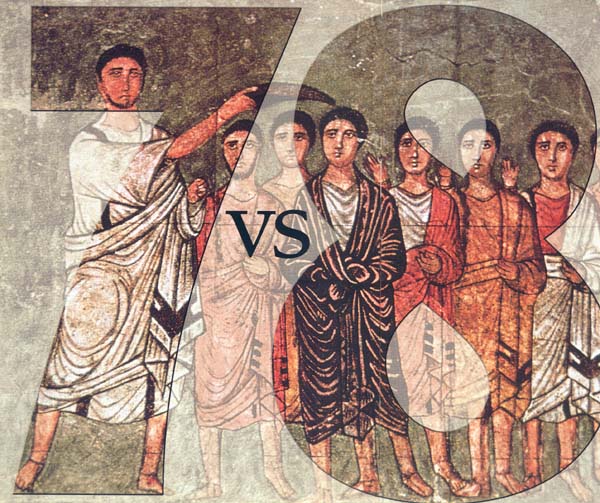Image Details

Jewish Museum/Art Resource, NY
Samuel (left) anoints David (center) “in the presence of his brothers” (1 Samuel 16:13), as painted on the wall of a third-century C.E. synagogue at Dura-Europos, in modern Syria. Although the Bible clearly states that Samuel rejected David’s seven older brothers before anointing the youngest son (1 Samuel 16:10), the Dura artist depicts seven siblings in all—including David. In portraying the brothers, the artist may have turned to a genealogy in 1 Chronicles 2:13–15, which lists only seven brothers, rather than the Book of Samuel’s description of the anointing.
Beginning with Genesis 2:3, when God blesses “the seventh day and hallow[s] it,” the number seven carries special prominence in the Hebrew Bible, and the Dura paintings, like much ancient Jewish art, reflect this. The Dura painter revised the story of the anointing from Samuel to emphasize the number seven.
In the mid-third century, Dura, a fortress on the eastern edge of the Roman empire, supported a multi-ethnic community that practiced a variety of religions. The local sects used art and number symbology to teach the faithful and to compete with other religions for new members. The emphasis on seven in the Dura synagogue paintings and on the number eight in the local church’s paintings reflects a clash between Jews and Christians over the proper day of worship—the seventh day (what we would call Saturday), which the Jews observed as the Sabbath, or what early Christians referred to as the eighth day (our Sunday).
